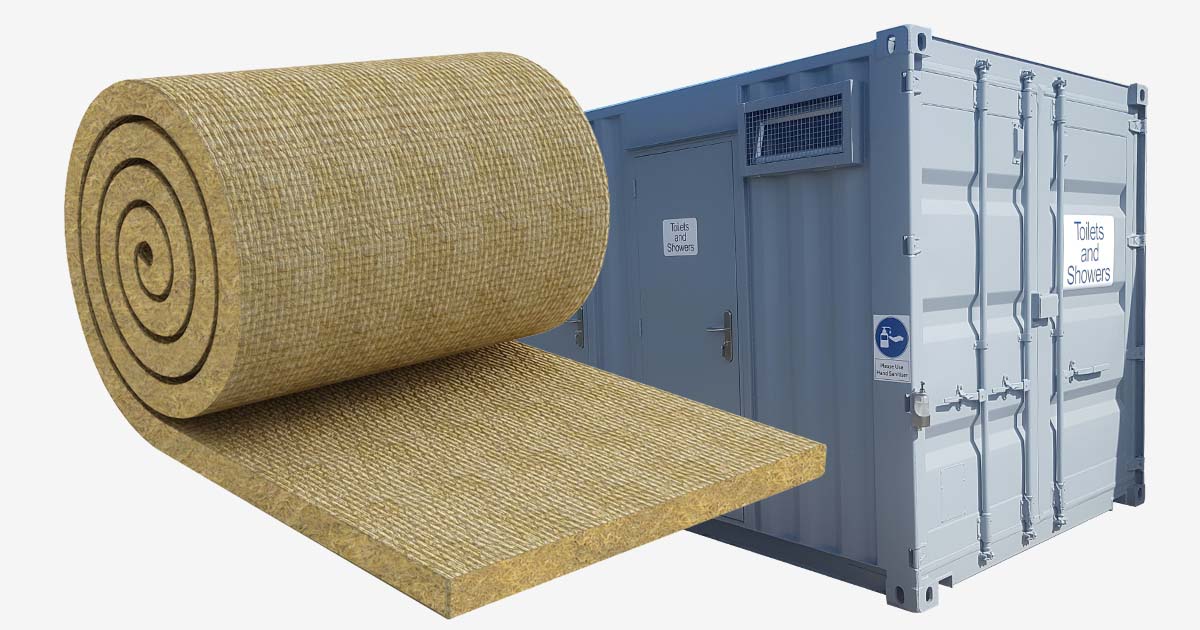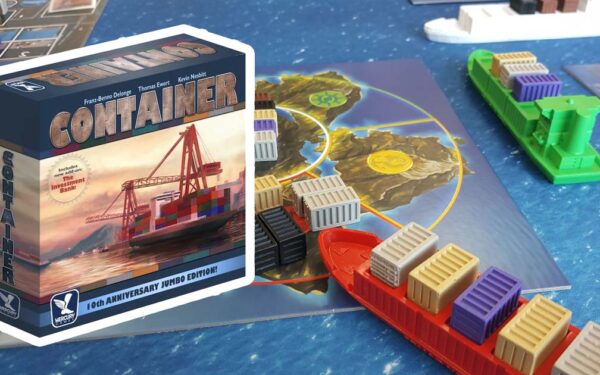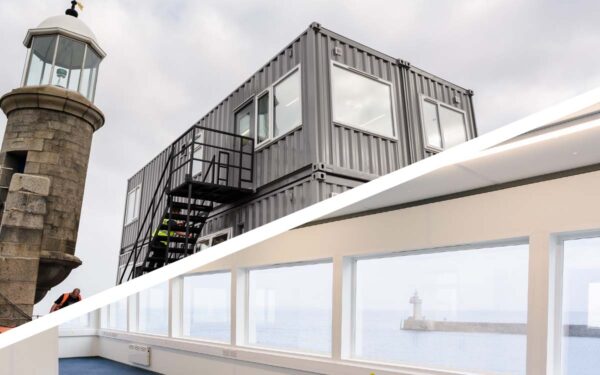
Our shipping container insulation options are a key part of each build. Regulating temperatures inside any building is important. Especially where people are concerned.
Popularity still growing
A housing shortage, sustainability and value for money are key factors in the continued popularity of shipping containers. It began with a few bohemian buildings. The realisation that shipping containers could be used for more than just storage sparked the revolution.
People started to experiment. After all these things were cheap to buy, strong and mobile. You could build anything. You could build it anywhere and you could do it cheaply.
Problem; gosh its too hot — brr its too cold
In temperate climates everything was fine. Until of course the temperature dropped. Now people had problems. Without serious heating systems shipping container buildings were unbearably cold. Likewise in hot weather, without A/C, these buildings were like ovens!
Solution; Shipping container insulation
We were doing it in offices, restaurants, retail buildings and homes so why not install insulation in shipping contains. This opened up a can of worms. Simple physics tells us that steel absorbs heat from the sun like there’s no tomorrow. Its not great and trapping heat either. With so many shipping container insulation options available its difficult to choose the right type. Experiments showed us over the years that there is no single best option.
We’re explore the best shipping container insulation options available today. Here at InBox Projects we have tried and tested many different insulation types. All of them have benefits and drawbacks alike. We’ll try to explain what we think works best for each build. After-all, every shipping container building project is different.
Popular shipping container insulation options
Please note every project is different. We build restaurants, retail outlets and dwellings. We install them all over the world. Hot climates require a slightly different approach compared to cold climates. We look for high R-values. R-value is a measure of how well a barrier, such as a layer of insulation, prevents heat from escaping and its effectiveness as a thermal insulator.
The running order below is not necessarily our order of preference either. Its a simple list that we hope will help you during your decision process.
Insulation Blankets (Rockwool)
Rockwool blanket insulation is a tried and tested method of insulating shipping containers. It comes in rolls. It therefore needs to be fitted into panels and covered with gypsum board finish or other type of sheet. Rockwool is a rock-based mineral fibre insulation. Its made with basalt rock and recycled slag. Basalt is abundant in the earth. Slag is a by-product of the steel and copper industry. The minerals are melted and spun into fibres.
Rockwool is a cost effective solution. All cavities need to be well filled leaving no free air gaps or space. This will help it to perform well. Rockwool is perfect for commercial premisses. However we might suggest a higher grade insulation material for dwellings built with shipping containers.
Blanket insulation is made with the following material, some of which is recycled including:
- Basalt rock
- Plastic fibres
- Glass
- Recycled slag
- Cotton
- Mineral wood
Insulation Boards
Another common form of insulation is board insulation. EPS insulation boards are made with polystyrene amongst other materials. Insulation boards are light easy to install. They are a great option for shipping containers when space is limited. These panels are usually quite thin. They also have high R-values. This means they can be much thinner than other solutions but still perform the same.
Kingspan is a type of insulation that we install within our containers. We cover it materials such as ply or gypsum boards. Kingspan is a popular brand of insulation. However its high quality also drives up the price. Its worth spending extra when maximising space is important.
Spray Foam Insulation
Spray foam is another popular shipping container insulation option. It allows you to quickly create a seamless layer of insulation. Gaps and seams are a cause of heat loss. They also cause condensation. Spray foam has one of the highest R-values of any insulation product. However, spray foam is an expensive insulation option.
Icynene is on of the industry leaders in spray foam insulation. It works really well at insulating shipping containers. It prevents condensation and can be applied to the inside and outside of the container.
Spray foam insulation is sprayed onto interior surfaces. It expands slightly and sets as a hard. Spray foam forms a water-resistant covering. Its not pretty but its not meant to be. It should always be covered up with panelling of some sort. Spray foam has a lifespan of up to 80 years.
Spray foam insulation has other benefits:
- Spray foam is a good sound insulator
- It has a high R-value
- Its resistant to mold, fungus, and bacteria
Spray foam is one of the best solutions for containers that house delicate equipment. Computer network systems, chemicals and other sensitive assets need to be kept at stable temperatures. Such requirements will usually justify the extra expensive of using spray foam.
A drawback of spray foam insulation is that its not sustainably. Its a petrochemical product made with fosil fules. Many conventional spray foams have very detrimental impacts on the atmosphere. So if sustainablity is an important factor in your build, and it should be, we recommend using a cheaper insulation alternative.
Eco-friendly Insulation
You can use wool, cotton or even recycled insulation to insulate converted shipping containers. The installation process is the same as it is for Rockwool/blanket insulation. The production process for making these products uses a small amount of energy compared to other materials. The materials are also safe to use and free from irritation. Eco insulation materials are able to absorb damp and still perform well enough. Eco-friendly insulation types include;
- Eco-friendly sheep’s wool insulation
- Environmentally friendly cork insulation
- Hemp insulation
- Cellulose insulation
- Ecological wood wool insulation
Other eco-friendly insulation options
You can actually use any material to insulate a converted shipping container. This provides the oportunity for anyone to recycle or re-purpose other materials for use as insulation in a converted shipping container.
Conclusion
Well we hope this gives you a better understanding of the available insulation options for your project. Please keep in mind if you intend to use external cladding this will help regulate internal temperatures. Do contact us if you have any questions or need help. We have many years experience in all aspects of shipping container recycling and conversion.
Further reading
https://inboxprojects.com/experiential-containers-event-retail
https://inboxprojects.com/container-conversions
https://en.wikipedia.org/wiki/Building_insulation
https://www.insulation-info.co.uk/eco-friendly-insulation




